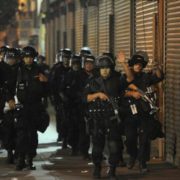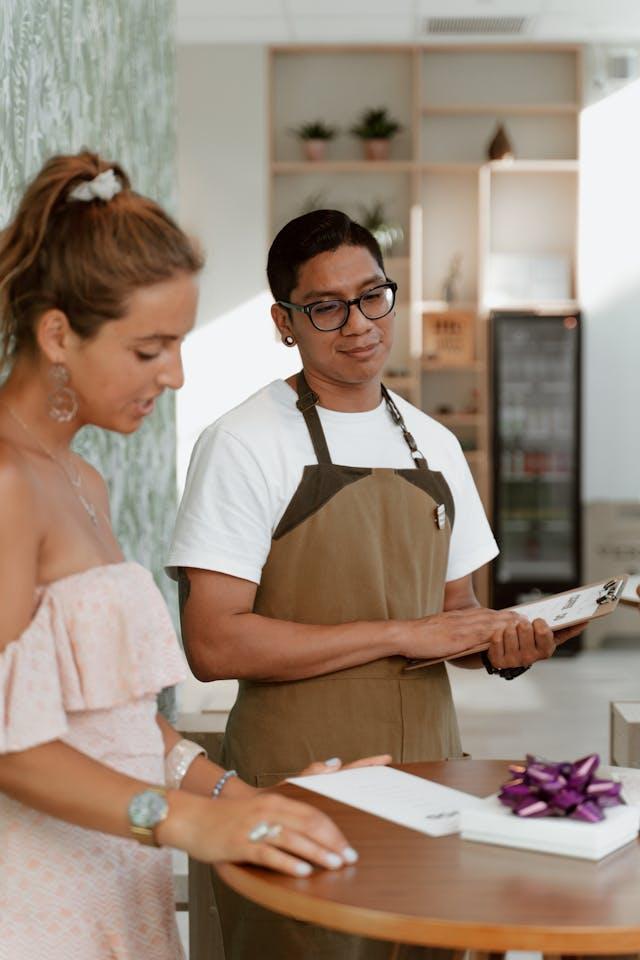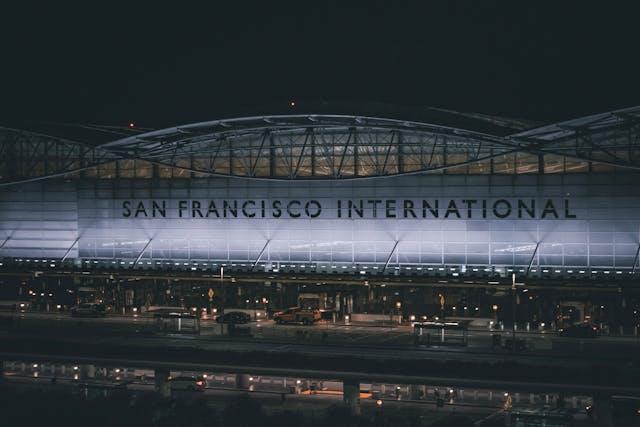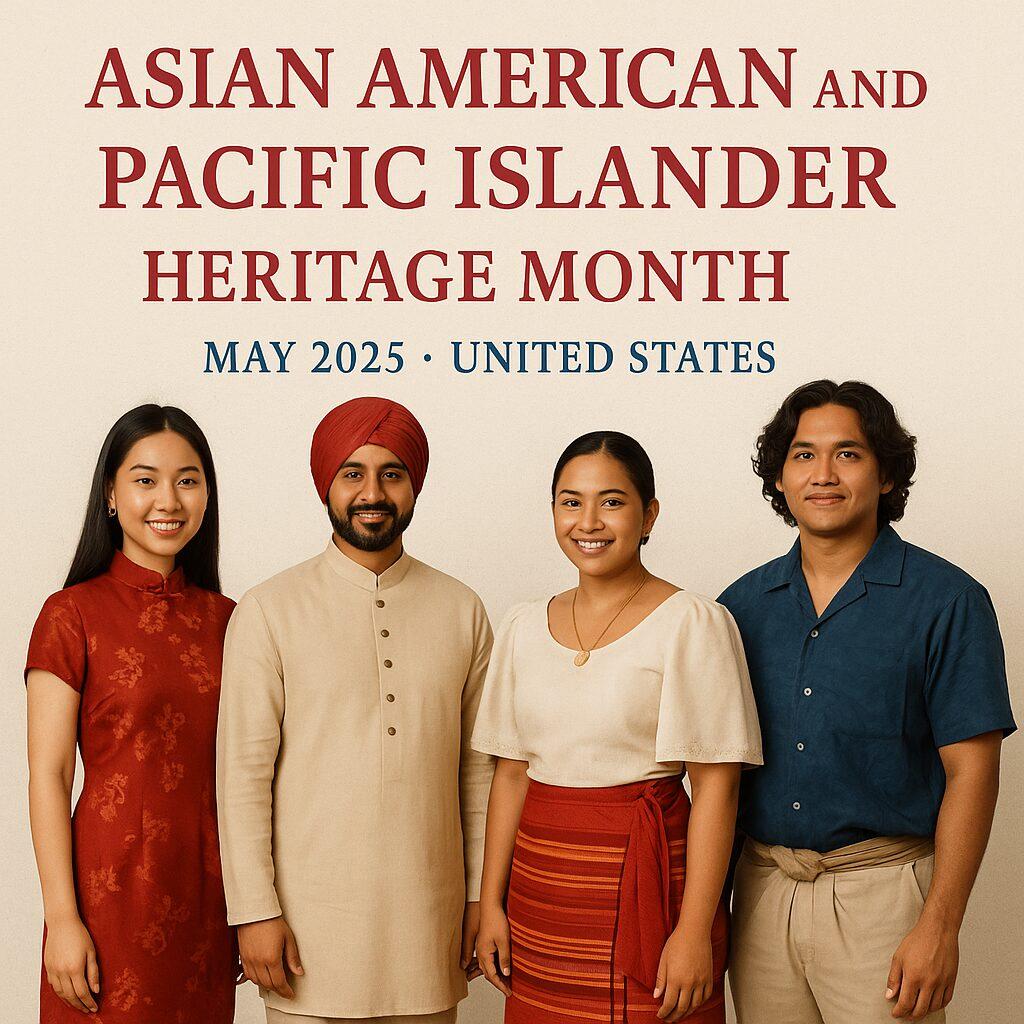According to a Los Angeles Police Department report made public on Mar. 8, over one third of the people shot by Los Angeles police last year had documented signs of mental illness–nearly triple the number from 2014.
The report also found that African Americans continued to account for a disproportionately high number of people shot by officers, given LA’s demographics. African Americans make up about 9 percent of the city’s population. Eight (21 percent) of the 38 people struck by LAPD gunfire in 2015 were black, the report said.
The 300-page analysis was an effort designed to help identify ways to reduce use-of-force incidents, reported the Los Angeles Times. It offered an in-depth look at how and when Los Angeles police officers used excessive force in recent years.
Fourteen of the 38 people shot by LAPD officers in 2015 had documented signs of mental illness, the report said. About a quarter of the nearly 1,900 less-serious uses of force — ranging from an officer using a Taser or firing a bean-bag shotgun, to forcibly grabbing someone — involved someone the officer believed was mentally ill.
The report’s numbers also offered a reminder of questions that have plagued the LAPD and law enforcement agencies across the country: How can officers safely interact with a growing mentally ill population, and how can cities improve strained relationships with black residents, when police shootings of African Americans remain disproportionately high?
LAPD Chief Charlie Beck said that the report would offer “a framework for the Police Commission, the department and the public to talk about how Los Angeles police use force.”
“Although encounters in which officers use force were relatively rare — accounting for fewer than 2,000 of the 1.5 million contacts officers made last year — the department [was] eager to drive the number down,” Beck stressed.
“We’re more than willing to look ourselves in the mirror and say, ‘What’s occurring and how can we do better?’”
Two high-profile incidents — one on Skid Row, and other incident near the Venice boardwalk — involved police officers killing homeless black men.
On Tuesday, activists packed the commission meeting to mark the one-year anniversary of the shooting in Downtown LA’s Skid Row, in which officers fatally shot Charly “Africa” Keunang after he allegedly grabbed a rookie cop’s holstered gun. According to police, Keunang had previously spent years in a prison mental hospital.
As Beck began to speak to commissioners on Tuesday, activists leaped from their seats, holding signs with Keunang’s name, chanting, “Can’t kill Africa!”
Other agencies have been pushing for reforms in how the criminal justice system treats mentally ill offenders and criminals, whose numbers are increasing in jails and courtrooms. County supervisors are pressured to improve jail conditions for mentally ill inmates. L.A. County District Attorney Jackie Lacey vowed to look at ways to divert mentally ill people from the criminal justice system.
Beck said the department was also looking at how officers could best interact with someone believed to be mentally ill and under the influence of drugs or alcohol. The chief also noted an increase in shootings involving people investigators later determined may have been trying to commit “suicide by cop.”
Brittney Weissman, an executive director with the National Alliance on Mental Illness, said “the sharp uptick in shootings of mentally ill [people] raises a lot of questions for us.” Weissman called for more de-escalation training for officers, along with diversionary programs for arrested mentally ill people.
“I do think that every law enforcement agency has room for improvement in dealing with people with mental illness and the homeless, and the LAPD is no exception,” she said.
LAPD has already reported some changes reflecting the trends described in the report, including last year’s rollout of so-called de-escalation training focused on slowing down volatile situations, particularly those involving people who may be mentally ill, officials said.
Less-lethal devices are also more readily available to officers. Officers are also now required to carry Tasers, and soon will keep bean-bag shotguns in the front of their patrol cars instead of the trunk.
Another area of the report that prompted questions from experts, activists and commissioners was the number of African Americans shot by police last year.
“Black residents,” the official report said, “are over-represented among violent crime victims. African Americans also made up 41 percent of violent crime suspects in 2015, 33 percent of violent crime arrestees and 26 percent of people stopped by police.”
For the Latino community, which makes up 48% of the city’s population, 22 (58 percent) of the 38 people shot by LAPD officers in 2015 were Latino, the report found. The number of Asian Americans shot last year by cops was not reported.
LAPD officials said it was important to “understand that the over-representation of African Americans in the criminal justice system was not limited to police shootings.”
Capt. John McMahon told commissioners that this “department won’t rest until we get that number to zero. That’s the only number that is acceptable to us.”
“It’s not surprising that if the LAPD is disproportionately stopping and searching African Americans that they are also disproportionately using force, including deadly force,” said Peter Bibring, a senior staff attorney for the American Civil Liberties Union of Southern California. “This is a point that we’ve been trying to make for a long time.”






